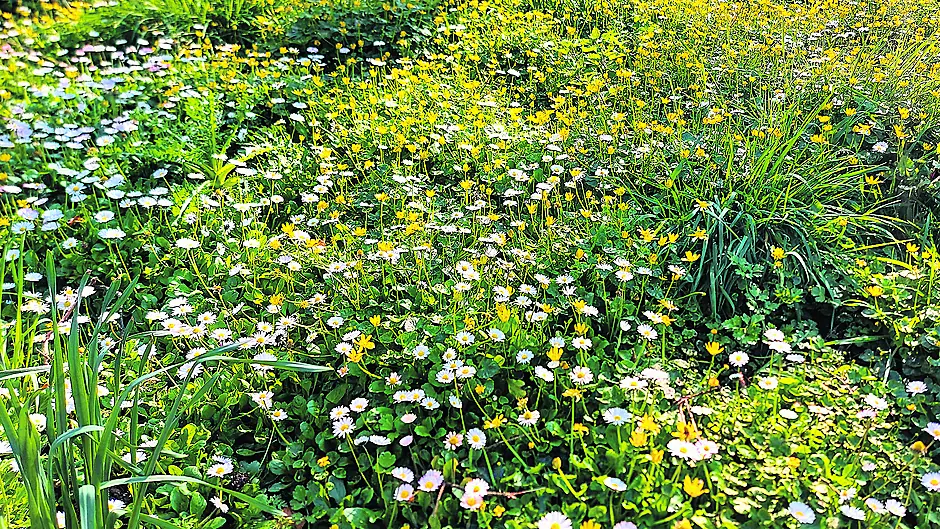AS I write, the bitter scarabhín wind is blowing around the house and it is indeed, as the old folks used to say, ‘neither good for man nor beast’. This infamous easterly wind gets its name from the Irish ‘garbh mí na gcuach’, the ‘rough month of the cuckoo’, which traditionally refers to the mid-April to mid-May period. Alongside the cuckoo, this devilishly cold wind often brings changeable weather and the last bite of winter, as it certainly has today.
Despite this phenomenon, the indomitable march of spring continues, with brave little wildflower heads emerging all around us – beauties growing ‘somewhere especially for you’, as Kavanagh once so poetically put it.
And alongside the star performers, such as ransoms and bluebells, there are a myriad of smaller useful plants that come to the fore at this time of year.
Familiar faces
The dandelion is one of the many familiar faces remerging right now, providing vital early sustenance to insects. Aside from its value to insect life, this ubiquitous plant has a variety of uses to man too.
One of its common names, the ‘piss-a-bed’, refers to its diuretic properties which were widely utilised by our ancestors. Indeed, many people still drink dandelion tea to ward off such ‘watery problems’ today.
It was also employed extensively in the treatment of warts. Actually, my own father used to pull me out of bed early in the morning to rub freshly harvested dandelion juice on my childhood warts. He believed that the first dew enhanced the plant’s medicinal potency, and it seemed to work too as best as I can recall.
Aside from its medicinal properties, this plant is a worthwhile crop in a variety of other ways. Its flowers can be utilised in wine making, its leaves eaten in salads, and its roots dried and roasted to make ‘dandelion coffee’. And, in addition to its value as an early source of nectar, this plant provides sustenance to other wildlife too. Its seed heads are very attractive to birds, especially bullfinches, and I once spent a very happy hour watching them expertly harvesting this free bounty in my rewardingly unkempt garden some years ago.
And, of course, the dandelion has been used by generations of Irish children as a way of telling the time – blowing off its seeds, with each puff signifying an hour in time. This childhood game gave rise to its other common name of ‘the clock’.
Another yellow spring flower, the humble buttercup, also comes into its own at this time of the year. It was traditionally used to decorate Irish houses and outbuildings to ward off the fairies around the festival of Bealtaine, on May Eve. It was often rubbed on cows’ udders too for the same reason and plaited to create necklaces of ‘gold’ to protect young girls from these malign forces.
And every child knows, of course, that a buttercup is a also tool that can be used to tell whether someone likes the taste of butter or not. This involves one person holding a buttercup under the chin of another. If gold is reflected on the skin above the flower, as it would in sunshine, this is regarded as proof of a buttery penchant.
The daisy is another small wildflower much beloved by children, who have long used its predictive powers in the ‘he loves me, he loves me not’ game. Daisy chains have also adorned many a child’s neck and in Ireland where they were known as ‘slabhra sí’, or fairy chains. And, alongside the buttercup, these necklaces protected against the fairies at Bealtaine. This pretty flower had medicinal uses too as a cure for burns and in an eye lotion.
The name daisy comes from ‘day’s eye’ and the flower heads do need a bright day to open and, like the lesser celandine, they turn their faces towards the sun to catch its rays as it moves across the sky.
It was once believed that if a person stood on the first daisy that they saw in the year they would be ‘pushing up daisies’ themselves before that year was out. So do tread carefully when you’re out and about collecting these anti-fairy flowers!









